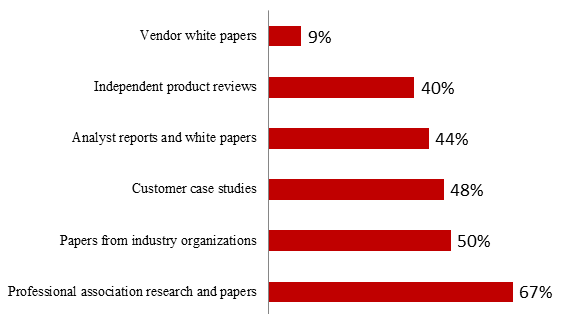
by Jennifer Hart Yim | May 18, 2015 | Blog, Logistics, Strategy, Supply Chain
This article is part of a series of articles written by MBA students and graduates from the University of New Hampshire Peter T. Paul College of Business and Economics.
Michael Hickey is a former fifth grade teacher turned business professional. His experience includes content marketing in the IT industry and operations management for United Parcel Service. He will complete his MBA from the University of New Hampshire in 2015. He enjoys long walks along the conveyor belt and Ben and Jerry’s ice cream. He lives with his wife, Betsy, in Dover, New Hampshire and they are expecting their first child in June.
4 questions to ask when determining if a 3PL is right for your company
 Third-party logistics, or 3PL, is an industry on the rise thanks to the constant innovations in complementary industries like telecommunications, data analytics, and cloud technologies. To avoid confusion, let’s call 3PL what it is: outsourcing. But it’s not the kind of outsourcing that typically comes to mind when you hear the term. Rather, it’s a specific type of outsourcing related to the operations side of a company in areas like order fulfillment, inventory and warehouse management, or transportation of finished goods. As many companies, and perhaps your competitors, begin to employ some form of 3PL, you may be tempted to follow suit. But before you hand over the keys, consider whether or not 3PL is a good fit for your company by answering these four questions:
Third-party logistics, or 3PL, is an industry on the rise thanks to the constant innovations in complementary industries like telecommunications, data analytics, and cloud technologies. To avoid confusion, let’s call 3PL what it is: outsourcing. But it’s not the kind of outsourcing that typically comes to mind when you hear the term. Rather, it’s a specific type of outsourcing related to the operations side of a company in areas like order fulfillment, inventory and warehouse management, or transportation of finished goods. As many companies, and perhaps your competitors, begin to employ some form of 3PL, you may be tempted to follow suit. But before you hand over the keys, consider whether or not 3PL is a good fit for your company by answering these four questions:
Question 1: What are your company’s core values?
Why do you exist as a company? What service or product do you provide that you believe is better than all others like it? And what are the core values that your company adheres to in good times and bad, for better or for worse? Core values make you who you are. They are the DNA of the company. Stonyfield Farm, for example, produces a variety of yogurts from their New Hampshire-based facility. One of their core values is that they use only organic ingredients, sourced from family-owned organic farms in their products. No ifs, ands, or buts. That’s a core value. It won’t change, during either boom or recession. And everything they do as a company must align with that. Your company’s strategic alignment stems from identification of its core values, and each decision you make as a company should work seamlessly with your strategic alignment.
Action step: Identify your core values. If 3PL conflicts with any core values, you should avoid forcing its implementation, even if there are cost savings to be gained.
Question 2: What are your company’s core competencies?
What are the things that your company does well? The Yankee Candle Company’s core competencies lie within their research and development and the chemists they employ. Their specialized skills and olfactory expertise drive the creation of precisely scented candles that make you say, “I know I smell a pumpkin pie, but I can’t find it anywhere!” Their competencies help them stand apart from the competition. You would be remiss to give over your core competency to someone else. If your expertise lies in local delivery and timely service, why outsource it to the guys with the brown trucks?
Action step: Identify your core competencies. If 3PL takes the place of any part of your core competencies, you could be weakening the overall value proposition of your company.
Question 3: Will using a 3PL provider allow you to enhance your core competencies to meet your company’s goals?
The purpose of debating whether or not to employ 3PL providers should not focus so much on reduced costs, which can be one of the foremost benefits, but rather whether or not it can enhance your core competencies and stimulate growth for your company. Is your goal to reach broader markets, but you lack the expertise to make it happen? Perhaps an e-commerce fulfillment provider could help you reach those markets. Do you have an outstanding product, but can only sell it to those within a small radius of your operations? Maybe this would be the appropriate time to call on the guys with the brown trucks.
Action step: Draw parallels between the service you wish to outsource and the goal it will meet.
Question 4: What is the cost to your company?
It’s the question that always needs to be considered. But don’t take this question at face value: we’re not just talking about how choosing a 3PL will affect the bottom line. Of course there will be monetary costs associated with hiring another company, and there is even a tipping point when using a 3PL may be cost ineffective. So after a careful cost/benefit analysis, consider the other costs associated with handing over part of your value chain to a third party:
Time costs: Does outsourcing add lead times or delivery times to orders? Decide whether possible time costs take away from your value proposition, or enable your company to meet larger goals.
Control costs: Are you willing to hand over direct control of part of your value chain to someone else? Keep in mind that it’s possible no one cares about your business quite as much as you do. Can you trust someone else to make the same kind of decisions you would make in respect to your company and its customers?
Reputation costs: What happens if a 3PL provider does not perform as anticipated? Will it put a blemish on your company’s image? If a farm outsources its delivery to a local trucking company, and the refrigeration in the trucks falters and causes food to spoil, will the customer assume that the trucking was bad, or do they just assume that the quality of the produce from the farm is questionable? It takes a long time to build up a reputation, and only a short time to dismantle it. Don’t risk it on a provider you can’t trust.
Action step: Vet your possible 3PL options to see whose values closely align with yours. It may prove to be a critical step in choosing the right provider as opposed to the cheapest one.
Third party logistics provides an avenue for companies to scale to capabilities they may never have had the ability to reach. Expanded consumer markets, faster delivery times, and more efficient inventory management are some of the benefits to be had. But before you get drawn towards the soft glow of higher revenues and wider margins through outsourcing, be careful to make sure that your choice to engage 3PL providers aligns with your company’s strategic plans. And if you do choose to outsource, take your time to find the right provider who can add the most value to your business, not just the least amount of digits on the balance sheet.

by Jennifer Hart Yim | May 18, 2015 | Blog, Logistics, Strategy, Supply Chain
This article is part of a series of articles written by MBA students and graduates from the University of New Hampshire Peter T. Paul College of Business and Economics.
Michael Hickey is a former fifth grade teacher turned business professional. His experience includes content marketing in the IT industry and operations management for United Parcel Service. He will complete his MBA from the University of New Hampshire in 2015. He enjoys long walks along the conveyor belt and Ben and Jerry’s ice cream. He lives with his wife, Betsy, in Dover, New Hampshire and they are expecting their first child in June.
4 questions to ask when determining if a 3PL is right for your company
 Third-party logistics, or 3PL, is an industry on the rise thanks to the constant innovations in complementary industries like telecommunications, data analytics, and cloud technologies. To avoid confusion, let’s call 3PL what it is: outsourcing. But it’s not the kind of outsourcing that typically comes to mind when you hear the term. Rather, it’s a specific type of outsourcing related to the operations side of a company in areas like order fulfillment, inventory and warehouse management, or transportation of finished goods. As many companies, and perhaps your competitors, begin to employ some form of 3PL, you may be tempted to follow suit. But before you hand over the keys, consider whether or not 3PL is a good fit for your company by answering these four questions:
Third-party logistics, or 3PL, is an industry on the rise thanks to the constant innovations in complementary industries like telecommunications, data analytics, and cloud technologies. To avoid confusion, let’s call 3PL what it is: outsourcing. But it’s not the kind of outsourcing that typically comes to mind when you hear the term. Rather, it’s a specific type of outsourcing related to the operations side of a company in areas like order fulfillment, inventory and warehouse management, or transportation of finished goods. As many companies, and perhaps your competitors, begin to employ some form of 3PL, you may be tempted to follow suit. But before you hand over the keys, consider whether or not 3PL is a good fit for your company by answering these four questions:
Question 1: What are your company’s core values?
Why do you exist as a company? What service or product do you provide that you believe is better than all others like it? And what are the core values that your company adheres to in good times and bad, for better or for worse? Core values make you who you are. They are the DNA of the company. Stonyfield Farm, for example, produces a variety of yogurts from their New Hampshire-based facility. One of their core values is that they use only organic ingredients, sourced from family-owned organic farms in their products. No ifs, ands, or buts. That’s a core value. It won’t change, during either boom or recession. And everything they do as a company must align with that. Your company’s strategic alignment stems from identification of its core values, and each decision you make as a company should work seamlessly with your strategic alignment.
Action step: Identify your core values. If 3PL conflicts with any core values, you should avoid forcing its implementation, even if there are cost savings to be gained.
Question 2: What are your company’s core competencies?
What are the things that your company does well? The Yankee Candle Company’s core competencies lie within their research and development and the chemists they employ. Their specialized skills and olfactory expertise drive the creation of precisely scented candles that make you say, “I know I smell a pumpkin pie, but I can’t find it anywhere!” Their competencies help them stand apart from the competition. You would be remiss to give over your core competency to someone else. If your expertise lies in local delivery and timely service, why outsource it to the guys with the brown trucks?
Action step: Identify your core competencies. If 3PL takes the place of any part of your core competencies, you could be weakening the overall value proposition of your company.
Question 3: Will using a 3PL provider allow you to enhance your core competencies to meet your company’s goals?
The purpose of debating whether or not to employ 3PL providers should not focus so much on reduced costs, which can be one of the foremost benefits, but rather whether or not it can enhance your core competencies and stimulate growth for your company. Is your goal to reach broader markets, but you lack the expertise to make it happen? Perhaps an e-commerce fulfillment provider could help you reach those markets. Do you have an outstanding product, but can only sell it to those within a small radius of your operations? Maybe this would be the appropriate time to call on the guys with the brown trucks.
Action step: Draw parallels between the service you wish to outsource and the goal it will meet.
Question 4: What is the cost to your company?
It’s the question that always needs to be considered. But don’t take this question at face value: we’re not just talking about how choosing a 3PL will affect the bottom line. Of course there will be monetary costs associated with hiring another company, and there is even a tipping point when using a 3PL may be cost ineffective. So after a careful cost/benefit analysis, consider the other costs associated with handing over part of your value chain to a third party:
Time costs: Does outsourcing add lead times or delivery times to orders? Decide whether possible time costs take away from your value proposition, or enable your company to meet larger goals.
Control costs: Are you willing to hand over direct control of part of your value chain to someone else? Keep in mind that it’s possible no one cares about your business quite as much as you do. Can you trust someone else to make the same kind of decisions you would make in respect to your company and its customers?
Reputation costs: What happens if a 3PL provider does not perform as anticipated? Will it put a blemish on your company’s image? If a farm outsources its delivery to a local trucking company, and the refrigeration in the trucks falters and causes food to spoil, will the customer assume that the trucking was bad, or do they just assume that the quality of the produce from the farm is questionable? It takes a long time to build up a reputation, and only a short time to dismantle it. Don’t risk it on a provider you can’t trust.
Action step: Vet your possible 3PL options to see whose values closely align with yours. It may prove to be a critical step in choosing the right provider as opposed to the cheapest one.
Third party logistics provides an avenue for companies to scale to capabilities they may never have had the ability to reach. Expanded consumer markets, faster delivery times, and more efficient inventory management are some of the benefits to be had. But before you get drawn towards the soft glow of higher revenues and wider margins through outsourcing, be careful to make sure that your choice to engage 3PL providers aligns with your company’s strategic plans. And if you do choose to outsource, take your time to find the right provider who can add the most value to your business, not just the least amount of digits on the balance sheet.

by Fronetics | Feb 2, 2015 | Blog, Supply Chain

Outsourcing fulfillment can makes sense.
Amazon has set the standard for speedy fulfillment.
Despite being both parodied (make sure to watch Netflix’s Drone to Home video) and parroted (the FAA recently clipped a brewery’s attempt to deliver beer by drone to Minnesota fishermen), Amazon insists unmanned aerial delivery vehicles will soon be as common as mail trucks.
While we wait for products to drop from the sky, outsourcing fulfillment to the right provider has never been more important for businesses vying for attention from consumers used to free two-day and next-day deliveries.
“The reality is that Amazon is so big that they are now mandating what the customer satisfaction requirements are for everyone, even if you don’t think that you compete with Amazon,” Jim Tompkins, president of Tompkins International, once told Modern Materials Handling.
If you are dealing with the following issues, you may want to take a good look at fulfillment business partners:
- You are spending a disproportionate amount of time and money on filling orders.
- The size of your warehouse is keeping your company from growing.
- You would rather spend your expertise on developing and marketing your products.
- The cost of warehouse equipment and warehouse employees is too high.
Also, keep in mind:
- Fulfillment cost: As a first step, make sure you know your exact fulfillment cost per order before you start gathering quotes from fulfillment companies.
- Proximity: Your fulfillment should be located as close to your customers as possible, not only to reduce shipping costs but also to achieve that necessary speed of delivery. Once again, Amazon has taken the lead by investing untold amounts in building distribution centers within 200 miles of major metropolitan areas.
- Scalability: Scalability is important, as well. Can the third-party distribution center grow with your business and absorb the seasonal peaks and valleys of ordering?
And finally, be diligent about researching your chosen provider. Ask targeted questions such as:
- Is the fulfillment center financially sound? Inquire about debt and ask for bank references.
- What is its reputation? Check how long the company has been in business and its credibility in the industry.
- What kind of technology does it use? The systems in place will tell you about the service that you can expect.
- How effectively does it communicate? Great communication is key when dealing with back orders, returned items, and cancellations.
Companies that cannot match Amazon’s speed of delivery run the risk of making a quick exit.

by Fronetics | Feb 2, 2015 | Blog, Supply Chain

Outsourcing fulfillment can makes sense.
Amazon has set the standard for speedy fulfillment.
Despite being both parodied (make sure to watch Netflix’s Drone to Home video) and parroted (the FAA recently clipped a brewery’s attempt to deliver beer by drone to Minnesota fishermen), Amazon insists unmanned aerial delivery vehicles will soon be as common as mail trucks.
While we wait for products to drop from the sky, outsourcing fulfillment to the right provider has never been more important for businesses vying for attention from consumers used to free two-day and next-day deliveries.
“The reality is that Amazon is so big that they are now mandating what the customer satisfaction requirements are for everyone, even if you don’t think that you compete with Amazon,” Jim Tompkins, president of Tompkins International, once told Modern Materials Handling.
If you are dealing with the following issues, you may want to take a good look at fulfillment business partners:
- You are spending a disproportionate amount of time and money on filling orders.
- The size of your warehouse is keeping your company from growing.
- You would rather spend your expertise on developing and marketing your products.
- The cost of warehouse equipment and warehouse employees is too high.
Also, keep in mind:
- Fulfillment cost: As a first step, make sure you know your exact fulfillment cost per order before you start gathering quotes from fulfillment companies.
- Proximity: Your fulfillment should be located as close to your customers as possible, not only to reduce shipping costs but also to achieve that necessary speed of delivery. Once again, Amazon has taken the lead by investing untold amounts in building distribution centers within 200 miles of major metropolitan areas.
- Scalability: Scalability is important, as well. Can the third-party distribution center grow with your business and absorb the seasonal peaks and valleys of ordering?
And finally, be diligent about researching your chosen provider. Ask targeted questions such as:
- Is the fulfillment center financially sound? Inquire about debt and ask for bank references.
- What is its reputation? Check how long the company has been in business and its credibility in the industry.
- What kind of technology does it use? The systems in place will tell you about the service that you can expect.
- How effectively does it communicate? Great communication is key when dealing with back orders, returned items, and cancellations.
Companies that cannot match Amazon’s speed of delivery run the risk of making a quick exit.

by Fronetics | Aug 19, 2014 | Blog, Content Marketing, Leadership, Marketing, Strategy, Talent

By consistently creating, curating, and distributing valued and trusted content you can position your company as an industry leader.
What is valued and trusted content?
“Peer-power”
A survey by the CMO Council found that all content is not viewed equally by B2B buyers. “Peer-powered content” is more valued and trusted than non-peer content.
The survey found that professional association research and papers are the most valued and trusted content. Papers from industry organizations, case studies, and analyst reports and white papers were also reported to be valued. In contrast, vendor white papers were not found to be valued highly.
What type of content do you most value and trust?

Source: CMO Council
Depth not promotional
The characteristics that were found to be valued the most by B2B buyers were depth of the content (47 percent) and ease of access and readability (44 percent). Respondents reported that they do not like content that has too many requirements to download (50 percent) or is promotional or self-serving (43 percent).
Good content is shared
B2B buyers report that they share good content. Fifty-nine percent of survey respondents share content with 25 or more peers and associates, and 28 percent of survey respondents forward content on to 100 or more people.
Position yourself
To position your company as an industry leader you need to provide valued and trusted content. This means creating, curating, and distributing content that educates, informs, and addresses specific needs.
It also means avoiding the trap of self-promotion. Valued and trusted content is not content that is self-serving or promotional, rather valued and trusted content provides customers with answers, solutions, and education.
Blogging is essential, but additional content is necessary as well. Case studies and white papers are two go-to content solutions that can help you position your company as a trusted leader within your industry.
Remember that you don’t need to go it alone. More than 44 percent of B2B marketers report that they outsource content creation.

 Third-party logistics, or 3PL, is an industry on the rise thanks to the constant innovations in complementary industries like telecommunications, data analytics, and cloud technologies. To avoid confusion, let’s call 3PL what it is: outsourcing. But it’s not the kind of outsourcing that typically comes to mind when you hear the term. Rather, it’s a specific type of outsourcing related to the operations side of a company in areas like order fulfillment, inventory and warehouse management, or transportation of finished goods. As many companies, and perhaps your competitors, begin to employ some form of 3PL, you may be tempted to follow suit. But before you hand over the keys, consider whether or not 3PL is a good fit for your company by answering these four questions:
Third-party logistics, or 3PL, is an industry on the rise thanks to the constant innovations in complementary industries like telecommunications, data analytics, and cloud technologies. To avoid confusion, let’s call 3PL what it is: outsourcing. But it’s not the kind of outsourcing that typically comes to mind when you hear the term. Rather, it’s a specific type of outsourcing related to the operations side of a company in areas like order fulfillment, inventory and warehouse management, or transportation of finished goods. As many companies, and perhaps your competitors, begin to employ some form of 3PL, you may be tempted to follow suit. But before you hand over the keys, consider whether or not 3PL is a good fit for your company by answering these four questions:


